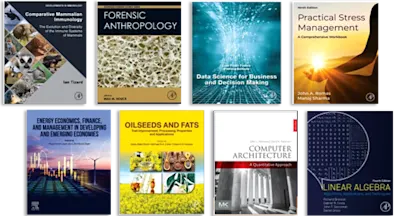
Developing E-Business Systems & Architectures
A Manager's Guide
- 1st Edition - December 12, 2000
- Imprint: Morgan Kaufmann
- Authors: Paul Harmon, Michael Rosen, Michael Guttman
- Language: English
- Paperback ISBN:9 7 8 - 1 - 5 5 8 6 0 - 6 6 5 - 4
- eBook ISBN:9 7 8 - 0 - 0 8 - 0 5 0 4 1 1 - 7
Developing E-Business Systems & Architectures is not another book on how the Internet is changing business or about the potential of e-commerce. The authors assume that th… Read more
Purchase options

Developing E-Business Systems & Architectures is not another book on how the Internet is changing business or about the potential of e-commerce. The authors assume that their readers already understand these things. Rather, it is written for executives and managers of medium to large companies who are considering or are already engaged in transforming their companies into e-businesses, and especially for IT managers with responsibilities for designing and developing new corporate software systems.This book provides managers with a road map to help them develop a strategic plan for their own transition. It also focuses on e-business architectures and software development practices that will need to change, and how the company itself must change to accommodate software development with components. Since all transformation depends upon people, there is also an emphasis on the reorganization of IT teams to support component-based development.
* Includes many case studies that the authors, all of whom have written best-selling books on e-business, have gathered from years of experience in implementing these systems.* Focuses on the changes companies must make in their IT groups to support the development of e-business initiatives.* Fully describes the enterprise component architecture framework for implementing e-business applications with an enterprise class infrastructure.
All business managers involved in e-commerce development and related organisational change.
Foreword by Ed Yourdon. Preface. The E-Business Challenge:Toys R Us; Charles Schwab; Citigroup and World Banking; Automakers and Their Parts Suppliers; Summary. Developing an E-Business Strategy: Defining a Strategy; Porter's Model of Competition; Industries, Products, and Value Propositions; Strategies for Competing; An E-Business Strategy; Developing Your Strategy; The Classic Model of Competition; Summary. Redesigning Business Processes for E-Business: Transitioning to an E-Business; Business Process Reengineering; BPR for E-Business; Converting to an E-Business; The New Role of the Customer; Changing Business Processes for the Web; Summary. E-Business Applications: The Challenges of the E-Business Environment; Enterprise Application Requirements; Types of E-Business Applications; Summary. Components: What Is a Business Component?; Client Components; Server Components; Container Viewpoint; Application Servers as Containers; Business Viewpoint; Packaging Viewpoint; Server Component Models; Abstract and Implementation Component Models; Summary. An Enterprise Component Architecture: What Is an Architecture?; A Component Architecture; The Architecture Development Process; The Technical Architecture; Summary. Implementing a Component Architecture: The Component Factory; The Component Model; Interface Design Considerations; Other Component Design Considerations; State Management; Transaction Models; Component Usage Models; Fundamental Interface Design Patterns; Application Scenarios; Summary. Managing the Transition to an E-Business: Types of Transitions; An Overview; A Transition Plan; Phase 1: Initiation; Phase 2: Pilot Application Development; Phase 3: Organizational Conversion; Phase 4: Continuation; Summary. Retooling for the Internet Age: The Business Challenge; Changing Software Strategies; A Journey of a Thousand Miles; Flipping Channels; Expanding the Transition; The Home Stretch; Summary. Afterword, Surviving the Transition. Glossary. Notes and References. Bibliography. Index.
- Edition: 1
- Published: December 12, 2000
- Imprint: Morgan Kaufmann
- Language: English
PH
Paul Harmon
Paul Harmon is a cofounder and executive editor at Business Process Trends, an internationally popular website that provides a variety of free articles, columns, surveys and book reviews each month on trends, directions, and best practices in business process management. He is also a cofounder, chief methodologist, and principal consultant of BPTrends Associates, a professional services company providing executive education, training, and consulting services for organizations interested in understanding and implementing business process management. At the same time Mr. Harmon serves as a Senior Consultant for AI with Cutter Consortium.
Affiliations and expertise
Enterprise Alignment, San Francisco, CA, USAMR
Michael Rosen
Michael Rosen is Chief Enterprise Architect at Genesis Development Corporation, an IONA Technologies' Company. He has over 20 years of experience in distributed computing technologies, including transaction processing, object systems, DCE, MOM, COM, and CORBA, and he coauthored Integrating CORBA and COM Applications (Wiley).
MG
Michael Guttman
Michael Guttman has over twenty-five years of expertise architecting, developing, and deploying large-scale complex enterprise software systems and infrastructures. He currently serves as director for the Object Management Group's MDA FastStart Program. Previously, he was chief technology officer (CTO) of Genesis Development Corporation, which he co-founded in 1992. After Genesis was sold to enterprise software vendor IONA Technologies, Mr. Guttman subsequently served as IONA's VP of Strategic Technology, and helped manage the operational integration of the two companies.
While at Genesis and IONA, Mr. Guttman managed the development of SureTrack™, a groundbreaking process for transitioning large IT organizations to advanced software technologies. Mr. Guttman also was a major contributor to numerous key technology standards, including OMG's CORBA, which has become the embedded messaging protocol of choice for sophisticated enterprise middleware from such vendors as BEA, IBM, and Sun. More recently, he has been working with the OMG to promote the OMG's Model Driven Architecture (MDA), an integrated set of enterprise computing standards which includes Unified Modeling Language (UML), Meta-Object Facility (MOF), XML Meta-Data Interchange (XMI), and Common Warehouse Meta-Model (CWM).
Mr. Guttman has been a contributing editor for such publications such as PCWorld, PCWeek (now e-Week), Object Magazine, Java Report, Application Development Advisor, Application Development Trends, and Software Magazine, where he currently authors a column on MDA. He is also a co-author of two highly regarded books on advanced uses of distributed computing technology, The Object Technology Revolution (Wiley, 1996) and Developing E-Business Systems and Architectures: A Manager's Guide (Morgan Kaufmann, 2000).
Affiliations and expertise
Voyant Group, West Chester, Pennsylvania, U.S.A.